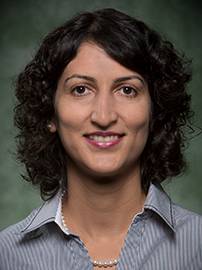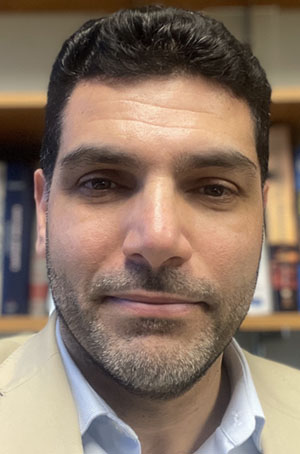The MEMS/NEMS labs conduct fundamental and applied research using state-of-the-art micro and nanoscale experimental characterization techniques to study MEMS and NEMS properties and interactions. This includes designing, modeling, simulating, characterizing, and testing a vast variety of MEMS and NEMS devices and applications.
We solve industry-related problems. We investigate the failure and collapse of microstructures due to mechanical shock, capillary forces, and electrostatic forces. Fundamental research is aimed at understanding the basic phenomena and concepts related to the dynamics of micro and nanostructures, and the nonlinear vibration response of carbon nanotubes (CNTs).
Research activities include designing novel MEMS/NEMS sensors and switches, including a threshold switch triggered by mechanical shock, a capacitive switch that operates at reduced voltage, and smart bio- and chemo–mechanical sensors.
Research is also being done to encompasses modeling micro- and nano-devices and structures under coupled multi-physics (mechanical, electrostatic, squeeze-film, and thermoelastic) forces, developing reduced-order models and computationally efficient approaches to tackle the coupled multi-physics and nonlinear problems, and analyzing micro- and nano-scale phenomena.
Contact


Shahrzad Towfighian
Professor; Graduate Studies Director

Location
ES B224, B225, B500A/B
Equipment
Conductive Force Nanoprobe
The NanoFactory Instruments System SA2500. NE is an in-situ conductive force nano-probing system with a side entry double tilt TEM-NanoIndenter holder. The force probe sensor is integrated with a patented 3 dimensional approach mechanism providing a wide-range of sample/probe motions with sub-nanometer resolution. TEM imaging accurately positions the probe at the region of interest. The sensor/probe measures force and electric currents at specific locations on the specimen. This feature enables the in-situ studies of the electrical and mechanical properties of nanoscale structures.
Image Correlation System
The Aramis 3D Digital Image Correlation System enables characterization deformation of objects under extreme hygro-thermo-mechanical loading. This equipment enhances electronics and MEMS packing research especially in validating numerical simulations and understanding material behavior.
Laser Vibrometer
The Polytec MSA-500 laser vibrometer is an integrated microscope and scanning system for measuring out-of-plane vibrations of microstructures. It is capable of measuring the motion of microstructures that are a mere 1 um across, roughly 1/10 the size of the smallest structures currently measured using our existing PSV-300 laser vibrometer. The MSA-500 is also capable of stroboscopic video measurement of in-plane motion for frequencies up to 1 MHz.
Micro/Nano Biofluidics Inspection Suite
This suite of equipment precisely prepares fluidic, colloidal, molecular and cellular samples for high quality experimental investigations. A microcentrifuge, a temperature-controlled ultrasonic bath and a microfluidic mixer manipulate micro/nanoscale suspension and solutions through concentrating, diluting and mixing. In addition, special gas and humidity-controlled environment can be maintained inside a chemical glove box accessorized with a vacuum pump. An upright microscope equipped with a CCD camera is used to visually inspect and quantify fabricated micro/nanofluidic devices and the prepared samples on top of a vibration-isolation optical table.
Optical Characterization System
Specialized characterization tools are the major research equipment our researchers use in the area of free space and semiconductor optics. The spectrum analyzer characterizes the frequency response of devices and when coupled with a sweep oscillator, characterizes frequency to high frequencies greater than 20GHz. The high speed oscilloscope provides high speed time-domain pulse information and allows pictures of pulse shapes in 1ns scale used for semiconductor lasers, remote sensing or high-speed communication. The optical spectrum analyzer, an essential tool, allows measurement of power versus wavelength. The tunable laser characterizes wavelength dependent properties of detectors and modulators and allows pulse light source generation. The beam analysis system allows power/energy and the profile of beam shape measurements. The liquid crystal spatial light modulator (LCSLM) is used for adaptive optics experiments and in nano-scale measurements.
Probe Station with LCR Meter
Various electrical performance evaluations including frequency response are performed in this probe station. The system is comprised of three main pieces: probe station (Signatone), LCR meter (Agilent E4980A), and data acquisition computer/software that can calculate and display dielectric parameters.
The probe station is also equipped with an impedance analyzer and semiconductor analyzer.
This tool also measures electrical characteristic responses as a function of composition and chemical variations of materials.
Shock and Vibration Data Acquisition System
The Shock and Vibration DAQ provides expanded capability to acquire vibration-based signals for shock and vibration experimental research programs. The LDS-830 shaker's power amplifier provides full vibration testing capabilities including a thermal chamber for high and low temp in combination with vibration. Shock pulse is programmable to represent a wide range of realistic mechanical shock conditions.
UHF Vibrometer
The Polytech ultra-sensitive scanning ultra-high frequency vibrometer provides the unique capability of studying the motion aspects of very small structures, such as nanostructures and carbon nanotubes.
The vibrometer enables the detection of the vibration features and motion of sub‐micro and nanostructures, which typically have very high frequencies. These include carbon nano tubes and graphene sheets.
UV/Visible/NIR Spectrophotometer
The Perkin Elmer Lamda 950 UV/Vis/NIR spectrophotometer provides high absorbance scanning for the samples such as lenses, optical filters, polarization materials, organic materials, and inorganic materials.
These samples often need to be measured across the whole ultraviolet (UV), visible light (Vis), and near infrared (NIR) ranges of the electromagnetic spectrum (from 175-3300nm).
This equipment is also be used in the quantitative determination of solutions of metal ions and organic compounds. This system is useful for characterization of materials including thin film, sensor, and device fabrication that are important in electronic packaging, flexible electronics, MEMS, and photovoltaics.
This system has a 150-mm integrating sphere. In particular, it will provide a nice complementary characterization tool, along with our existing fourier transform infrared spectrometer.
Vacuum Sputter Tool
The Denton Desktop Pro sputter tool provides ceramic and metal thin film deposition on almost any substrate (Si, polymer, organic, glass, ceramic, or metal) and is equipped with one DC power supply and one RF power supply.
This equipment is used for research activities and in undergraduate and graduate instructional labs. In addition, the sputtering system builds on device research (e.g., electronic packaging, flexible electronics, photovoltaics).
Features of this tool include a protective/barrier layer for environmentally sensitive components, top electrodes to test electrical performance of the devices, and patterned structures for nanotechnology.
X-ray Diffractometer
The x-ray diffractometer (XRD) enables general purpose and routine material structure characterization using a position sensitive detector that offers high-quality diffraction measurements at very high speeds.
Relevant research topics include nanotechnology, materials, functional organic materials, solar cell, biosensors and biomedical, MEMS, microfluidic devices and batteries.